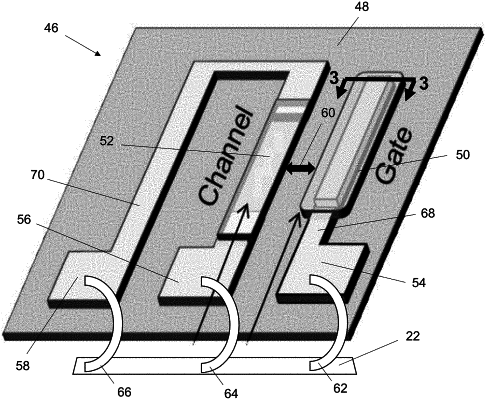| CPC A61B 5/1486 (2013.01) [A61B 5/0002 (2013.01); A61B 5/14517 (2013.01); A61B 5/14532 (2013.01); A61B 5/14546 (2013.01); A61B 5/4266 (2013.01); A61B 5/685 (2013.01); A61B 5/6833 (2013.01); A61B 5/1477 (2013.01); A61B 2560/0214 (2013.01)] | 16 Claims |

|
1. A wearable sensor system, comprising:
a flexible patch;
a socket;
an electronic circuit disposed on the flexible patch and connected to the socket;
a disposable sensor disposed on the flexible patch and removably connected to the electronic circuit via the socket, wherein
the disposable sensor detects a chemical compound,
the electronic circuit generates a detection signal commensurate with the chemical compound detected by the disposable sensor, and
the disposable sensor is removably plugged into the socket, thereby permitting replacement of the disposable sensor upon satisfaction of a predetermined condition;
a battery disposed on the flexible patch and connected to the electronic circuit to power the electronic circuit; and
a transceiver connected to the electronic circuit, wherein the transceiver transmits the detection signal;
wherein the disposable sensor comprises:
a flexible substrate;
a gate electrode built upon the flexible substrate and connected to a first connection pad, wherein the flexible substrate is configured to permit biological molecules in perspiration of a user to pass through the flexible substrate at the gate electrode to react and produce the chemical compound for detection, wherein the gate electrode comprises a first portion of a first conductive layer disposed on the flexible substrate and a second conductive layer disposed atop the first portion of the first conductive layer, wherein an immobilizing matrix having a consumable enzyme immobilized within the immobilizing matrix is disposed on the flexible substrate and encapsulates the gate electrode where the second conductive layer is disposed atop the portion of the first conductive layer such that the biological molecules that pass through the flexible substrate and enter the immobilizing matrix to directly interact with the consumable enzyme and the second conductive layer disposed within the immobilizing matrix, wherein the consumable enzyme reacts with the biological molecules to produce the chemical compound detectible by the disposable sensor, wherein second conductive layer of the gate electrode is entirely disposed within the immobilizing matrix and a second portion of the first conductive layer extends out of the immobilizing matrix and widens to form the first connection pad; and
a source drain electrode disposed on the flexible substrate, the source drain electrode being connected to a second connection pad and a third connection pad;
wherein the first connection pad, the second connection pad, and the third connection pad are configured to make a removable connection between the disposable sensor and the electronic circuit via the socket;
wherein the source drain electrode is disposed on a U-shaped body that extends from the second connection pad to the third connection pad, the U-shaped body comprising a proximal leg and a distal leg, the proximal leg being closer to the gate electrode than the distal leg;
wherein the proximal leg comprises an organic semiconductor and the organic semiconductor is disposed only along a portion of the proximal leg that is parallel to the second conductive layer of the gate electrode along an extended length and separated by a predetermined distance.
|